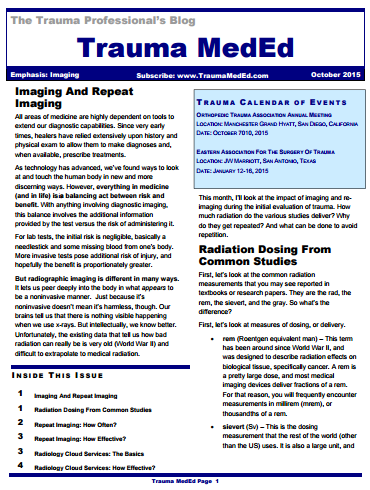We know that in-hospital trauma professionals are at risk for litigation. But what about prehospital providers? Unfortunately, there is painfully little literature for us to go on. In this case, I was only able to dig up a single 20 year old paper to help provide a little guidance.
A retrospective review was conducted of data from a computerized database (note that I did not say online; this was from the birth of the internet) of court cases filed against EMS agencies nationwide. It specifically looked at ambulance collisions and patient care incidents.
Here are the factoids:
- Only 76 cases were identified over a 6 year period (!!)
- Collision and patient care suits were divided nearly 50:50
- In ambulance collisions, the other motorist was likely to sue (78% of cases)
- With patient care issues, 93% of the plaintiffs were the patient (who were the other 7%??)
- The most common collision occurred in an intersection, or was a rear-end accident
- The most common patient care issues were arrival delay, inadequate assessment, inadequate treatment, patient transport delay, or failure to transport
- About half named an EMT or paramedic as codefendant
- 41% of suits were closed without any payment to plaintiff, but there were 5 cases with awards greater than $1M US (and this was in 1994!)
Bottom line: Yes, EMS providers do occasionally get sued. It is probably more likely today than it used to be given the legal climate in the US. Providers need to be familiar with the common reasons for lawsuits involving them, and always practice within their scope and in compliance with protocols and medical direction. Whether specific individual liability insurance is needed is a local and regional thing, and should be negotiated with your particular employer.
Reference: Emergency medical services liability litigation in the United States: 1987 to 1992. Prehosp Disaster Med 9(4):214-220, 1994.

